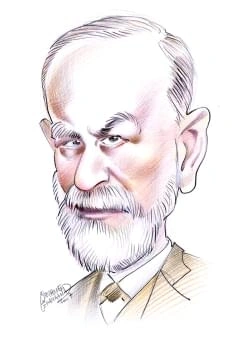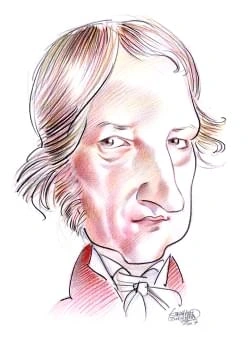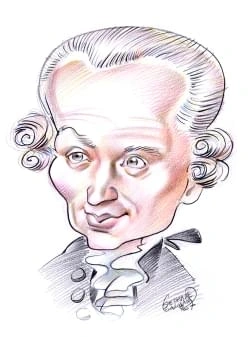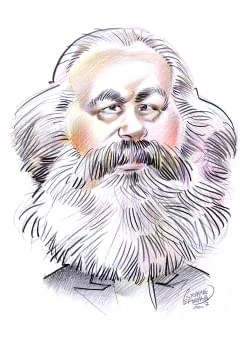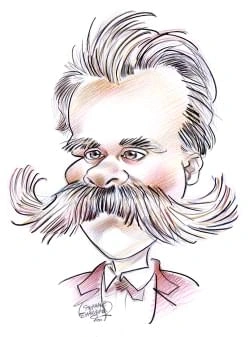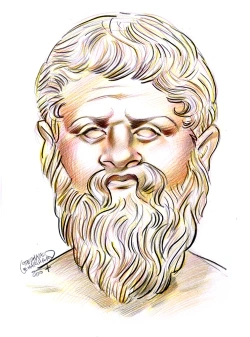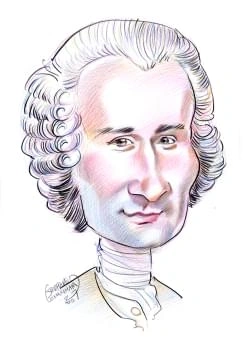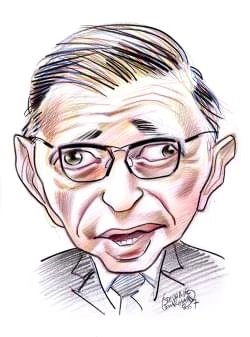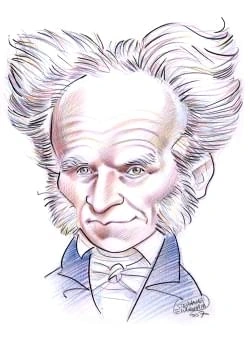549 résultats pour "country"
-
Georgia (country) - country.
1917. During the subsequent Soviet period, religious practice was strongly discouraged because the Soviet state was officially atheistic; however, the GeorgianOrthodox Church was allowed to function openly. Orthodox Christianity is the religion of about 58 percent of the Georgian population. Muslims represent about 19 percent of the country’s population, with ethnicAzerbaijanis, Kurds, and Ajars comprising the principal Muslim groups. Ajars are ethnic Georgians who converted to Islam in the 17th...
-
Armenia (country) - country.
because of ethnic tension brought on by a secessionist conflict in Nagorno-Karabakh, a region inhabited predominantly by Armenians in western Azerbaijan. In thereverse direction, many Armenian refugees entered Armenia from Azerbaijan during the conflict. Armenia’s official state language is Armenian, an Indo-European language with no surviving close relatives. It has a unique 38-letter alphabet that dates from the early5th century. Of its many spoken dialects, the most important are Eastern or Y...
-
Suriname (country) - country.
Tongo, a Creole language. Also known as Taki-Taki, Sranang Tongo includes elements of several languages and is the vehicle for most interethnic communication. Otherlanguages spoken in Suriname include Hindi, Javanese, Chinese, English, and French. Small numbers of Native Americans still speak indigenous languages. The main religions in Suriname are Christianity, Islam, and Hinduism. The majority of Christians are Roman Catholics, and members of the Moravian Church predominateamong Protestants. E...
-
Angola (country) - country.
Portugal in 1975, it had approximately 400,000 Portuguese settlers. The vast majority of the Portuguese community has since departed for Portugal. A Population Characteristics The 2008 estimated population of Angola, including Cabinda, was 12,531,357. The population distribution, however, was uneven, with about 70 percent of thepopulation concentrated in the north and along the coast. The rate of population increase was 2.1 percent annually in 2008. The population is overwhelmingly rural; only3...
-
Jordan (country) - country.
whom belong to the Greek Orthodox Church, make up about 4 percent of the population. Islam is the state religion and Arabic the official language. C Education Jordan has made significant strides in education in recent decades, despite the influx of hundreds of thousands of refugees and the very large share of the nationalbudget assigned to the armed forces. Public education is free and compulsory between the ages of 6 and 15. At the secondary level, about 85 percent of the malechildren and 87 p...
-
Kuwait (country) - country.
Oil revenues have allowed Kuwait to build an extensive educational system, yielding a literacy rate of 84 percent. Public school is free and compulsory from the age of 6to 13, and several private schools also teach this age group. Kuwait University (founded in 1966) is also free and offers programs in a wide range of professional andscientific fields at several campuses. Both the extensive library system at Kuwait University and the collection at Kuwait National Museum (1957) were heavily damage...
-
Lebanon (country) - country.
during the civil war. Within the country, thousands of Shia Muslim refugees fled fighting in southern Lebanon in the 1990s and moved into shantytowns in Beirut’ssouthern suburbs. Lebanon’s major cities were greatly affected by the civil war. Beirut has gradually regained most of its prewar population and remains the country’s largest city. Tripoli,the northern port, is the second largest city. Jūniyah, north of Beirut, was developed as a wartime port and subsequently had a population boom. Za ḩl...
-
Israel (country) - country.
harbor in the northern part of the country, and Ashdod, an artificial deepwater port to the south, serve as the main seaports on the Mediterranean. The port of Elat onthe Gulf of Aqaba provides Israel’s only access to the Red Sea, making it extremely important to the country’s shipping interests. D Natural Resources Although much of Israel’s desert regions contain poor soils, the northern Negev, the coastal plains, and the interior valleys provide patches of productive soils. Anestimated 18 per...
-
-
Tonga (country) - country.
as the Fale Alea, or Legislative Assembly, consists of the cabinet, nine representatives elected by Tonga’s 33 nobles, and nine representatives elected by the people.Elections are held every three years; all citizens aged 21 and over are eligible to vote. The Privy Council acts as the Court of Appeal, except for criminal cases, andappoints the Supreme Court judge. The country has a small defense force of about 200 and a separate police force. Tonga is a member of the United Nations (UN), theComm...
-
Uruguay (country) - country.
Freedom of religion is guaranteed by the constitution of Uruguay. Three-quarters of the people belong to the Roman Catholic Church. There are also sizable Protestantand Jewish congregations. The official language is Spanish, which in Uruguay has been influenced by Italian vocabulary and pronunciation. C Education Uruguay has one of the highest rates of literacy in Latin America, at 98.2 percent of the adult population. Six years of primary education is compulsory, and Uruguay isone of the few n...
-
Sierra Leone (country) - country.
commodities such as palm oil, palm kernels, coffee, cacao, ginger, kola nuts, and piassava (palm fibers) are grown for export. Cattle, goats, and sheep are raised, andthe fishing industry is of increasing importance. B Mining Gem and industrial diamonds are the leading mineral products of Sierra Leone. In 2004, 309,390 carats of gem-quality diamonds were produced. Rutile, a titanium oreof which Sierra Leone has one of the world’s largest deposits, and bauxite are also mined in large quantities....
-
Djibouti (country) - country.
l’Unité et de la Démocratie (FRUD; Front for the Renewal of Unity and Democracy) represents the Afar minority. The Parti National Démocratique (PND; Democratic National Party) and the Parti du Renouveau Démocratique (PRD; Democratic Renewal Party) are both small opposition parties favoring democratic reforms. VI HISTORY Djibouti lies at a major global crossroads where, some 100,000 years ago, early humans migrated from Africa to the Middle East. Livestock herding, which remainsimportant...
-
Country Music
I
INTRODUCTION
Willie Nelson
Country singer and musician Willie Nelson gained national popularity during the 1970s for a string of country hits,
including the 1978 hits "Mammas Don't Let Your Babies Grow Up to Be Cowboys" and "Georgia On My Mind.
Singer and mandolin player Bill Monroe is known as the father of bluegrass music. A virtuoso mandolin player, Monroe combined traditional folk ballads and gospel songswith string-band music played at very fast tempos. Monroe, with his band The Blue Grass Boys, performed from the mid-1920s until Monroe’s death in 1996. Otherwell-known bluegrass performers include banjo player Earl Scruggs, who played with Monroe during the 1940s; the Osborne Brothers, a duo from Kentucky known forits work during...
-
country, musique
d’Ernest Tubb, Lefty Frizzell et du célèbre Hank Williams. Celui-ci, excellant aussi bien dans les ballades teintées de blues, le honky-tonk et le hillbilly (« Honky Tonkin’ », « Lovesick Blues »), fait figure aujourd’hui de pionnier. Des chanteurs rock aussi célèbres que Bob Dylan ou Neil Young revendiquent avec ferveur l’héritage de Williams, le premier artiste country à avoir véritablement popularisé cette musique aux États-Unis. Dans les années 1940 et 1950, le mand...
-
LA MUSIQUE COUNTRY
La musique country Toutefois, dans un premier temps, bien que ces nouvelles influences musicales fassent partie de la culture américaine, elles restent encore très cir conscrites. Ainsi, il est clair que le blues, par exemple, n'a pas franchi les Appalaches. La naissance de l'industrie du disque et la multiplication des stations de radio mettent peu à peu fin à cet isolement géographique. Les communautés rurales du sud des Etats-Unis res tent toutefois...
- Solomon Islands (country) - country.
-
-
country, musique.
la star country Eddy Arnold avait fondé son exceptionnelle carrière dès la fin des années 1940, des artistes comme Jim Reeves, Patsy Cline ou, plus tard, Conway Twitty, se lancent à la conquête d’une audience internationale. Le courant « outlaws » (littéralement « hors-la-loi ») surgit à la fin des années 1960 en réaction au Nashville sound que d’aucuns considèrent comme une exploitation indécente des harmonies traditionnelles de la country. Ses représentants les plus fameux, Willie Nelson et...
-
Botswana - country.
at birth was 50.2 years, also a significant improvement. The urban population of Botswana has increased rapidly, from 18 percent of the total in 1981 to 51 percent in 2003. Gaborone, the capital, is the largest city and mainbusiness center. Other business centers are Francistown, Selebi-Pikwe, Molepolole, Kanye, and Serowe. Botswana received its name from the country’s principal ethnic group, the Tswana. Other ethnic groups include the Kgalagadi, Kalanga, and Basarwa. There are also asmall numbe...
-
Lithuania - country.
pollution. III PEOPLE Ethnic Lithuanians constitute about 80 percent of the country’s population. The proportion of Lithuanians increased slightly in the first years after the dissolution of theSoviet Union—many Lithuanians returned to their homeland from that country and abroad while some Russians, Ukrainians, and Belarusians left the country. Russiansand Poles constitute the country’s largest minority groups, each accounting for roughly 7 percent of the population. Jews were the largest mino...
-
Estonia - country.
protest the expansion of open-pit phosphorite mining in northeastern Estonia. Their success in stopping the expansion prompted further demonstrations as part of thecountry’s independence movement. Since independence Estonia has taken measures to protect the environment. The government has ratified international agreementsto reduce emissions of hazardous wastes and greenhouse gases, as well as to protect biodiversity, wetlands, and endangered species. Estonians cherish thecountryside, and 31 perc...
-
Venezuela - country.
Venezuela has six navigable rivers. Of the thousand or more streams in the country, the majority flow into the Orinoco. The Orinoco flows east across central Venezuelaand drains approximately four-fifths of the total area of the country. With the tributaries—the Apure, Meta, and Negro rivers—it forms the outlet into the Atlantic Oceanfor the waters of much of the interior of Colombia, as well as of inland Venezuela. F Climate The climate of Venezuela is tropical on the Llanos and along the coas...
-
Ghana - country.
times of depressed cacao prices, Ghana has significantly increased exports of timber to generate needed revenue. In 1988 Ghana initiated a conservation plan called the Forest Resource Management Project. In 1989 Ghana restricted the export of 18 tree species, and in 1994 thecountry banned the export of raw logs. About 4.8 percent (1997) of the country’s land is officially protected, but illegal logging threatens Ghana’s remaining forests. Deforestation, overgrazing, and periodic drought have led...
-
Colombia - country.
In Bogotá the average high temperature in January is 20°C (68°F), and in July the average high is 19°C (65°F). The highs for the same months in Barranquilla are 32°C(89°F) and 33°C (91°F). Throughout the year, three-month periods of rain and dry weather alternate. Along the Pacific coast precipitation is heavy. At Bogotá the annual rainfall averages about1,060 mm (about 42 in), and in Barranquilla it averages about 800 mm (about 32 in). Dry weather prevails on the slopes of the Cordillera Orient...
-
Libya - country.
junipers and mastic trees are found in the higher elevations. Only a few large mammals are found in Libya. Wildlife includes desert rodents, hyenas, gazelles, and wildcats. Eagles, hawks, and vultures are common. E Environmental Issues Libya has undertaken a number of major irrigation projects intended to ease the country’s water shortage. The most ambitious is the so-called Great Man-Made River(GMMR), a massive 25-year irrigation scheme begun in 1984. The GMMR is a vast water pipeline system d...
-
-
Tanzania - country.
The population of Tanzania (2008 estimate) is 40,213,162, giving the country an overall population density of 45 persons per sq km (118 per sq mi). Yet the populationdistribution is irregular, with high densities found near fertile soils around Kilimanjaro and the shores of Lake Malawi, and comparatively low density throughout much ofthe interior of the country. In the late 1960s and 1970s the Tanzanian government resettled most of the rural population in collective farming villages as part of i...
-
Senegal - country.
Although most of the population works in agriculture, Senegal has a growing industrial sector, one of the largest in West Africa. Nevertheless, two cash crops remain atthe foundation of the economy—peanuts and cotton. Important technical and economic assistance has been provided by France and other countries of the EuropeanUnion and the International Bank for Reconstruction and Development (World Bank). In 2006 the gross domestic product (GDP) was $9.2 billion, or $760.90 a person. A Agriculture...
-
Turkmenistan - country.
A Ethnic Groups With Turkmens constituting 77 percent of the population, Turkmenistan is the most ethnically homogeneous of the Central Asian republics. Uzbeks make up the largestminority group, with about 9 percent of the population. Other ethnic groups include Russians, Kazakhs, Tatars, Ukrainians, Azeris (ethnic Azerbaijanis), Armenians, andBaluch. In 1993 a bilateral treaty between Turkmenistan and Russia granted dual citizenship to Russians in the republic. At the 1995 census Russians cons...
-
Greece - country.
minerals, such as chromium, copper, uranium, and magnesium, are relatively small. Greece’s small petroleum deposits, located under the Aegean Sea near the island ofThásos, are rapidly being depleted. There are no significant reserves of natural gas. Greece’s forests, probably abundant in ancient times, have been significantly depleted. Subsequent soil erosion has made reforestation efforts difficult. Although muchof Greece’s soil is rocky and dry, the country’s mountains are interspersed with sm...
-
Afghanistan - country.
D Climate Most of Afghanistan has a subarctic mountain climate with dry and cold winters, except for the lowlands, which have arid and semiarid climates. In the mountains and afew of the valleys bordering Pakistan, a fringe effect of the Indian monsoon, coming usually from the southeast, brings moist maritime tropical air in summer.Afghanistan has clearly defined seasons: Summers are hot and winters can be bitterly cold. Summer temperatures as high as 49°C (120°F) have been recorded in thenorth...
-
Latvia - country.
The population of Latvia is about 2,245,423 (2008 estimate), yielding an average population density of 35 persons per sq km (91 per sq mi). Latvia is highly urbanized.Some 66 percent of the population lives in urban areas, with nearly one-third of the total population residing in the capital, Rīga. Other important cities includeDaugavpils, an industrial center in the southeast, on the Daugava River; Liep āja, an important port on the Baltic Sea; Jelgava, an industrial center near Rîga; J ūrmala,...
-
Guatemala - country.
C Climate The climate of Guatemala varies according to elevation, from hot coastal plains to cold mountain heights. Most of the population lives between 900 and 2,400 m (3,000and 8,000 ft) above sea level, where there are warm days and cool nights with average annual temperatures of 20°C (68°F). The coastal regions are hot and humid,with average annual temperatures of 28°C (83°F). A rainy season, from May through October, is sometimes called “winter” because it brings cloudy afternoons andlower...
-
Finland - country.
Productive forestland is the most valuable natural resource of Finland. Spruce, pine, and silver birch are the principal trees used to manufacture wood and pulp andpaper products. Finland lacks coal and petroleum resources and is a net importer of energy resources. However, Finland does have significant deposits of peat, which is cut from thenumerous peat bogs that cover much of the north. Peat is an important heat source for homes, and it provides about 7 percent of Finland’s electricity needs....
-
-
Hungary - country.
Northern Hungary lacks sufficient water, especially between July and October, when precipitation levels are typically low. Canals irrigate the Great Hungarian Plain,which is subject to drought. Because of the country’s mainly flat terrain, only limited water resources can be harnessed for hydroelectric power. F Environmental Issues Rapid industrialization in Hungary following World War II contributed significantly to a number of major environmental problems, including air, water, and soil pollu...
-
Cameroon - country.
seminomadic herders of the north. Cattle, goats, and fowl are the most commonly raised animals. B Forestry and Fishing Timber is traditionally one of Cameroon’s most valuable exports, consisting mainly of mahogany, ebony, and teak. The timber cut in 2006 amounted to 11.4 million cu m(401 million cu ft). Most of the fish caught in Cameroon come from the country’s rivers and lakes and are consumed locally. However, deep-sea fishing activity isincreasing, especially from the port of Douala. Some 1...
-
Ukraine - country.
a major hazard, especially to Ukraine’s water supply. The Chernobyl’ complex was finally shut down completely in December 2000, with the financial assistance ofWestern nations. The funds were to pay for the completion of two other nuclear power plants that would produce enough power to make up for the loss of the powersupply from the Chernobyl’ plant. III PEOPLE OF UKRAINE The population of Ukraine was estimated in 2008 at 45,994,287, giving the country a population density of 76 persons per s...
-
Italy - country.
C Natural Resources Italy is poor in natural resources. Much of the land is unsuitable for agriculture because of mountainous terrain or unfavorable climate. Italy, moreover, lacks substantialdeposits of basic natural resources such as coal, iron, and petroleum. Natural gas is the country’s most important mineral resource. Other deposits include feldspar andpumice. Many of Italy’s mineral deposits on the islands of Sicily and Sardinia had been heavily depleted by the early 1990s. Italy is rich...
-
Belize - country.
Education is compulsory for children between the ages of 5 and 14. Attendance at primary schools was nearly universal in 2002–2003, but only 78 percent of children ofsecondary school age were enrolled in school. Higher education is available at colleges in Belize City and Corozal. The literacy rate of 93 percent is one of the highest inLatin America. C Government Belize is governed under a constitution that became effective at independence in 1981. Belize recognizes the British monarch as its o...
-
Benin - country.
French is the official language of Benin, but most people speak an African language. Each of the country’s ethnic groups has its own language. Fon is the most widelyspoken language. About 52 percent of the population professes traditional religious beliefs, chiefly Vodun, a belief in spirits. Arab merchants introduced Islam to the region, and today it isthe religion of some 20 percent of the people, most of whom live in the north. Christianity, especially Roman Catholicism, is the religion of ab...
-
Honduras - country.
A Principal Cities The capital and largest city of Honduras is Tegucigalpa (2006 estimate, 1,324,000), located in the south-central highlands region. The country’s second largest city isSan Pedro Sula (549,498). The principal city and commercial center in the north, it lies in the heart of the vast banana plantations on the Caribbean Sea. La Ceiba(127,590) and Puerto Cortés (90,161) are among the leading Caribbean ports. B Language and Religion Spanish is the official language and is spoken by...
-
Zimbabwe - country.
contamination—especially from the dieldrin and DDT used in tsetse fly control—has significantly affected wildlife and human health. III PEOPLE AND SOCIETY OF ZIMBABWE In 2008 Zimbabwe’s population was estimated to be 12,382,920, giving the country a population density of 32 persons per sq km (83 per sq mi). With a birth rate of27 per 1,000 and a death rate of 22 per 1,000, Zimbabwe’s population growth rate is 0.6 percent. Life expectancy at birth was estimated at 40 years in 2008, downfrom 59...
-
-
Algeria - country.
areas to fishing. National parks, including the giant Tassili N’Ajjer National Park in the eastern corner of the country, comprise a large proportion of the protected area. The effects of Algeria’s human population on the fragile landscape have been severe. The greatest ecological threats are deforestation and burning of scrub vegetation,conversion of steppe habitat to arable land, and soil erosion due to overgrazing and poor farming practices. Pollution of Mediterranean coastal waters is pervas...
-
Chile - country.
D Plant and Animal Life The indigenous plant life of Chile varies according to climatic zone. Plant life in the northern region includes brambles and cactus and has little variety. Here, theAtacama provides one of the best examples on Earth of an absolute desert. The more humid Central Valley supports several species of cacti, espino (a thorny shrub),grasses, and the Chilean pine, which bears edible nuts. Dense rain forests are located south of Valdivia with laurel, magnolia, false beech, and v...
-
Vietnam - country.
E Natural Resources Vietnam’s most valuable natural resource is its land, particularly the fertile, alluvial soils in the Red and Mekong deltas. Some 29 percent of the land is currently beingcultivated. Vietnam has some valuable mineral resources, including gold, iron, tin, zinc, phosphate, chromite, apatite, and anthracite coal. Most deposits are located in the northernpart of the country. Few attempts were made to extract these minerals until the French takeover of Vietnam at the end of the 1...
-
Iran - country.
Zagros mountains. In the more arid central part of the country, wild pistachio and other drought-resistant trees grow in areas that have not been disturbed by humanactivity. Tamarisk and other salt-tolerant bushes grow along the margins of the Dasht-e Kavir. A wide variety of native mammals, reptiles, birds, and insects inhabit Iran. Many species of mammals—including wolves, foxes, bears, mountain goats, red mountainsheep, rabbits, and gerbils—continue to thrive. Others—including Caspian tigers,...
-
Austria - country.
Wildlife is generally scarce in Austria. Chamois, deer, and marmot are still present; bear, which were once abundant, are now almost completely absent. Hunting isstrictly regulated to protect the remaining species. F Environmental Issues Industrial emissions, a high volume of tourist traffic, and significant air pollution from other countries—principally the former East Germany, Slovakia, and the CzechRepublic—combine to make acid rain the major environmental problem in Austria. One-quarter of...
-
Spain - country.
B Natural Resources Spain has a number of mineral resources. The largest known deposits are of iron ore, zinc, and lead. Spain also produces significant quantities of copper and mercury.These deposits are mined mainly in Huelva province in southwestern Spain, around Cartagena on the Mediterranean, and at various points along the Bay of Biscay inthe north. Additionally, uranium is mined in the region of Extremadura, near the Portuguese frontier, where pyrites, fluorspar, gypsum, tungsten, and po...
-
Liberia - country.
West Atlantic, or Kwa linguistic groups. D Education Education is free and compulsory for children between the ages of 6 and 15. However, a scarcity of educational facilities means that few Liberians progress beyondprimary school. Almost all children of primary school-age attend school, but the figure drops to 23 percent (1999–2000) for secondary school-age children. Just 60percent of the population was literate in 2005. Higher education is provided by the University of Liberia (1862), in Monro...
-
Bangladesh - country.
F Environmental Issues Waterborne diseases such as cholera are a serious threat to public health in Bangladesh. Until the 1970s, many of Bangladesh’s people became sick from drinkingpolluted water drawn from surface rivers. Aid agencies such as the United Nations Children’s Fund (UNICEF) built shallow wells throughout the country to help provide asafe source of drinking water to Bangladesh’s poor. In the 1990s, however, it was discovered that many of these wells were contaminated by arsenic, a...
-
-
Bolivia - country.
E Plants and Animals Because of the wide variations in elevation, plant and animal species of nearly every climatic zone are found in Bolivia. A coarse grass, called ichu, grows on the largelybarren high plateau in the west. Para rubber trees, more than 2,000 species of hardwood trees, and vanilla, sarsaparilla, and saffron plants are common in the tropicalforests of the east. The llama, found chiefly on the Altiplano, is an efficient beast of burden. Alpacas and vicuñas also inhabit the platea...
-
Cambodia - country.
The population of Cambodia is 14,241,640 (2008 estimate). Population growth per year is estimated at 1.8 percent, one of the highest rates in Asia. The rate of infantmortality is also high. The population density is 81 persons per sq km (209 per sq mi), with the densest concentrations on the heavily cultivated central plain. Themountainous regions of the country, where malaria is widespread, are thinly populated, as are the poorly watered northern provinces. During the late 1970s, under thebruta...
}})
